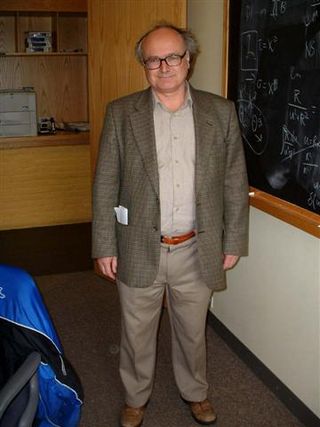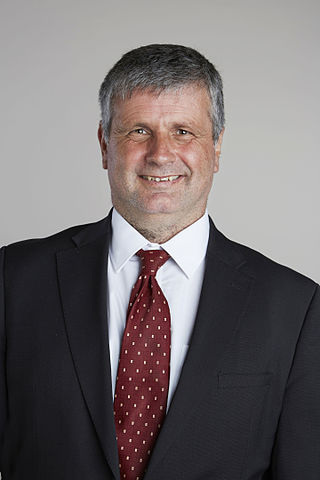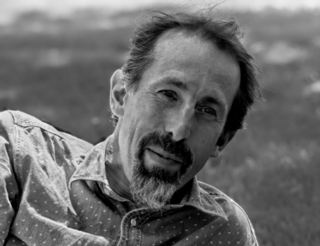Related Research Articles
M-theory is a theory in physics that unifies all consistent versions of superstring theory. Edward Witten first conjectured the existence of such a theory at a string theory conference at the University of Southern California in 1995. Witten's announcement initiated a flurry of research activity known as the second superstring revolution. Prior to Witten's announcement, string theorists had identified five versions of superstring theory. Although these theories initially appeared to be very different, work by many physicists showed that the theories were related in intricate and nontrivial ways. Physicists found that apparently distinct theories could be unified by mathematical transformations called S-duality and T-duality. Witten's conjecture was based in part on the existence of these dualities and in part on the relationship of the string theories to a field theory called eleven-dimensional supergravity.
In physics, string theory is a theoretical framework in which the point-like particles of particle physics are replaced by one-dimensional objects called strings. String theory describes how these strings propagate through space and interact with each other. On distance scales larger than the string scale, a string looks just like an ordinary particle, with its mass, charge, and other properties determined by the vibrational state of the string. In string theory, one of the many vibrational states of the string corresponds to the graviton, a quantum mechanical particle that carries the gravitational force. Thus, string theory is a theory of quantum gravity.

Edward Witten is an American mathematical and theoretical physicist. He is a professor emeritus in the school of natural sciences at the Institute for Advanced Study in Princeton. Witten is a researcher in string theory, quantum gravity, supersymmetric quantum field theories, and other areas of mathematical physics. Witten's work has also significantly impacted pure mathematics. In 1990, he became the first physicist to be awarded a Fields Medal by the International Mathematical Union, for his mathematical insights in physics, such as his 1981 proof of the positive energy theorem in general relativity, and his interpretation of the Jones invariants of knots as Feynman integrals. He is considered the practical founder of M-theory.

Michael James Duff FRS, FRSA is a British theoretical physicist and pioneering theorist of supergravity who is the Principal of the Faculty of Physical Sciences and Abdus Salam Chair of Theoretical Physics at Imperial College London.
Michael Boris Green is a British physicist and a pioneer of string theory. He is a Professor of Theoretical Physics in the School of Physics and Astronomy at Queen Mary University of London, emeritus professor in the Department of Applied Mathematics and Theoretical Physics and a Fellow of Clare Hall, Cambridge. He was Lucasian Professor of Mathematics from 2009 to 2015.

Gary William Gibbons is a British theoretical physicist.
Malcolm John Perry is a British theoretical physicist and emeritus professor of theoretical physics at University of Cambridge and professor of theoretical physics at Queen Mary University of London. His research mainly concerns quantum gravity, black holes, general relativity, and supergravity.

Christopher Michael Bishop is a British computer scientist. He is a Microsoft Technical Fellow and Director of Microsoft Research AI4Science. He is also Honorary Professor of Computer Science at the University of Edinburgh, and a Fellow of Darwin College, Cambridge. Chris was a founding member of the UK AI Council, and in 2019 he was appointed to the Prime Minister’s Council for Science and Technology.
Sergio Ferrara is an Italian physicist working on theoretical physics of elementary particles and mathematical physics. He is renowned for the discovery of theories introducing supersymmetry as a symmetry of elementary particles and of supergravity, the first significant extension of Einstein's general relativity, based on the principle of "local supersymmetry". He is an emeritus staff member at CERN and a professor emeritus at the University of California, Los Angeles.

David Ian Olive was a British theoretical physicist. Olive made fundamental contributions to string theory and duality theory, he is particularly known for his work on the GSO projection and Montonen–Olive duality.
Vlatko Vedral is a Serbian-born physicist and Professor in the Department of Physics at the University of Oxford and a Fellow of Wolfson College, Oxford. Until the summer of 2022 he also held a joint appointment at the Centre for Quantum Technologies (CQT) at the National University of Singapore. He is known for his research on the theory of quantum entanglement and quantum information theory. He has published numerous research papers, which are regularly cited, in quantum mechanics and quantum information, and was awarded the Royal Society Wolfson Research Merit Award in 2007. He has held a lectureship and readership at Imperial College, a professorship at Leeds and visiting professorships in Vienna, Singapore (NUS) and at the Perimeter Institute for Theoretical Physics in Canada. He is the author of several books, including Decoding Reality.
Christine Tullis Hunter Davies is a professor of physics at the University of Glasgow.
Philip Candelas, is a British physicist and mathematician. After 20 years at the University of Texas at Austin, he served as Rouse Ball Professor of Mathematics at the University of Oxford until 2020 and is a Fellow of Wadham College, Oxford.
Ali H. Chamseddine is a Lebanese physicist known for his contributions to particle physics, general relativity and mathematical physics. As of 2013, Chamseddine is a physics Professor at the American University of Beirut and the Institut des hautes études scientifiques.

Kevin Joseph Costello FRS is an Irish mathematician, since 2014 the Krembil Foundation's William Rowan Hamilton chair of theoretical physics at the Perimeter Institute in Waterloo, Ontario, Canada.

Andrew Peter Mackenzie is a director of Physics of Quantum Materials at the Max Planck Institute for Chemical Physics of Solids in Dresden, Germany and Professor of Condensed Matter Physics at the University of St Andrews, Scotland. He became a co-editor of the Annual Review of Condensed Matter Physics as of 2020.
Peter Christopher West, born on 4 December 1951, is a British theoretical physicist at King's College, London and a fellow of the Royal Society.
The Royal Society University Research Fellowship (URF) is a research fellowship awarded to outstanding early career scientists in the United Kingdom who are judged by the Royal Society to have the potential to become leaders in their field. The research fellowship funds all areas of research in natural science including life sciences, physical sciences and engineering, but excluding clinical medicine.

Jeremy John Baumberg, is a British physicist who is Professor of Nanoscience in the Cavendish Laboratory at the University of Cambridge, a Fellow of Jesus College, Cambridge and Director of the NanoPhotonics Centre.

Timothy Peter Softley is Pro-vice-chancellor (PVC) for research and knowledge transfer at the University of Birmingham.
References
- 1 2 3 Anon (2007). "Hull, Prof. Christopher Michael" . Who's Who (online Oxford University Press ed.). Oxford: A & C Black. doi:10.1093/ww/9780199540884.013.256675.(Subscription or UK public library membership required.)
- 1 2 Chris Hull at the Mathematics Genealogy Project
- 1 2 3 4 5 6 7 Anon (2012). "Professor Christopher Hull FRS". royalsociety.org. London: Royal Society. Archived from the original on 17 November 2015. One or more of the preceding sentences incorporates text from the royalsociety.org website where:
“All text published under the heading 'Biography' on Fellow profile pages is available under Creative Commons Attribution 4.0 International License.” --Royal Society Terms, conditions and policies at the Wayback Machine (archived 2016-11-11)
- ↑ "Home - Professor Chris Hull FRS". www.imperial.ac.uk.
- ↑ Imperial College London, publications of Professor Chris Hull, 2010-04-04. "PUBLICATIONS-c.hull". Archived from the original on 16 June 2011. Retrieved 4 April 2010.
- ↑ Edward Witten, in a radio interview in "Vetandets värld" on Swedish public radio, 2008-06-06. "Ett universum av strängarMöt ed Witten, ledande strängteoretiker - webbradio - sr.se". Archived from the original on 23 April 2009. Retrieved 4 April 2010.
- ↑ Hull, Christopher Michael (1983). The structure and stability of the vacua of supergravity. lib.cam.ac.uk (PhD thesis). University of Cambridge. OCLC 499826125. EThOS uk.bl.ethos.350108.
- ↑ Imperial College London, honours and awards of Professor Chris Hull, 2010-04-04. "HONOURS and AWARDS-c.hull". Archived from the original on 16 June 2011. Retrieved 4 April 2010.
![]() This article incorporates text available under the CC BY 4.0 license.
This article incorporates text available under the CC BY 4.0 license.